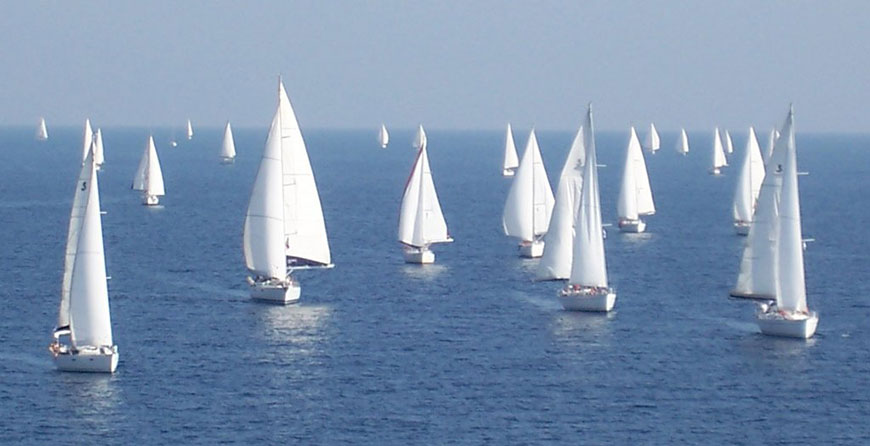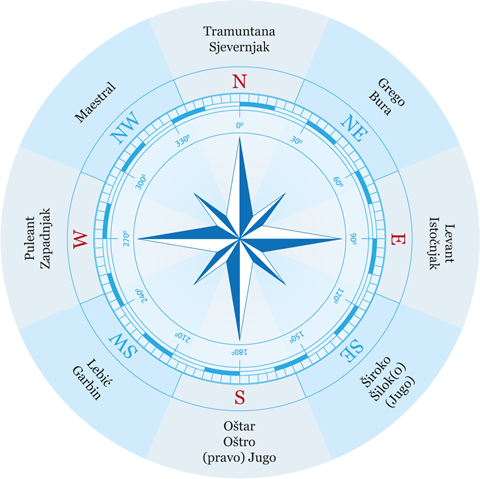
5 Most common Summer winds in Croatia
Croatia, or at least its coastal part, is a windy all year round, which is a great news for professional and recreational sailors! Because of the abundance of wind, the relatively safe (closed) nature of the Adriatic, and more islands, bays, ports, and beautiful landmarks than you can imagine, Croatia may just be the perfect choice for you to rent a sailboat, or a catamaran, and explore!

There is no such feeling in the world, like opening the sails and moving forward, propelled only with the invisible force of the wind. Perfect!
If the above is "your cup of tea", then you’d probably like to know the winds you can experience in Croatia. Because Croatia is predominately a summer sailing destination, we at Yacht Holiday, decided to make a list of most frequent summer winds in Croatia!
1. Maestral (mistral) NW
Maestral or Mistral is a cool wind that comes from the sea and to the land, so it blows from NW in most part of Croatia, due to its position. Maestral is a thermic wind that blows in the afternoon, because the land warms up faster than the sea, so the difference of pressures and temperatures creates wind. Though it’s mainly a soft to medium powered wind, it sometimes gets strong, especially in the narrow passes in Dalmatia such as Brac channel, and the Peljesac channel (which is why these areas are widely known windsurfing destinations). Maestral mainly doesn’t create big waves.
2. Pulenat W
Pulenat is a similar wind to Maestral, also thermal, but slightly shifted, so it blows from the west. It’s especially common in Dalmatia, and in the Hvar Island its known as "vitar priko škoja" or "wind across the Island". It often creates larger waves than Maestral and is a stronger wind.
3. Bura NE
Bura is a cold NE wind, which blows predominately in the winter time in Croatia, and in that period it reaches stormy speeds of up to 300 km/h. In the summertime, however bura is not that dangerous, and it blows in much lighter speeds, predominately in the night time when the land cools down. Bura wind variates in speed and blows in gusts. The most exposed area to bura is the middle Adriatic, Zadar area, and especially around Senj, a Croatian town known by its strong Bura wind. In the summer time it mainly doesn’t create big waves.
4. Jugo SE
Jugo is a frequent wind in the autumn, when it gets speeds of up to 50 knots, and even more. In the Summer it’s a rare wind and mostly blows at slow speeds. However in the late summer, it Jugo is more frequent, and this should be noted, as it can be a dangerous wind for sailors. Jugo is a Cyclonal wind often associated with bad weather, constant blowing, and big waves. In the autumn time the waves from Jugo reach 5 m in height in the more open sea areas, so beware!
5. Tramontana N
Though a rare wind its commonly associated with strong winds and sometimes even storms. Tramuntana or Tramontana, depending on a regional pronunciation, mostly blows in the northern Adriatic, and it’s especially known in the area of Rijeka, and Istria in general. However tramontana is less common in the summer, even though its common mistaken for a strong Maestral, because of the terrain configuration in Croatia.
In general, sailors in Croatia should be aware of narrow passes where the wind gets more speed, and even more so because the abundance of islands here. We strongly recommend crewed sailboat rental for sailors with little experience!
